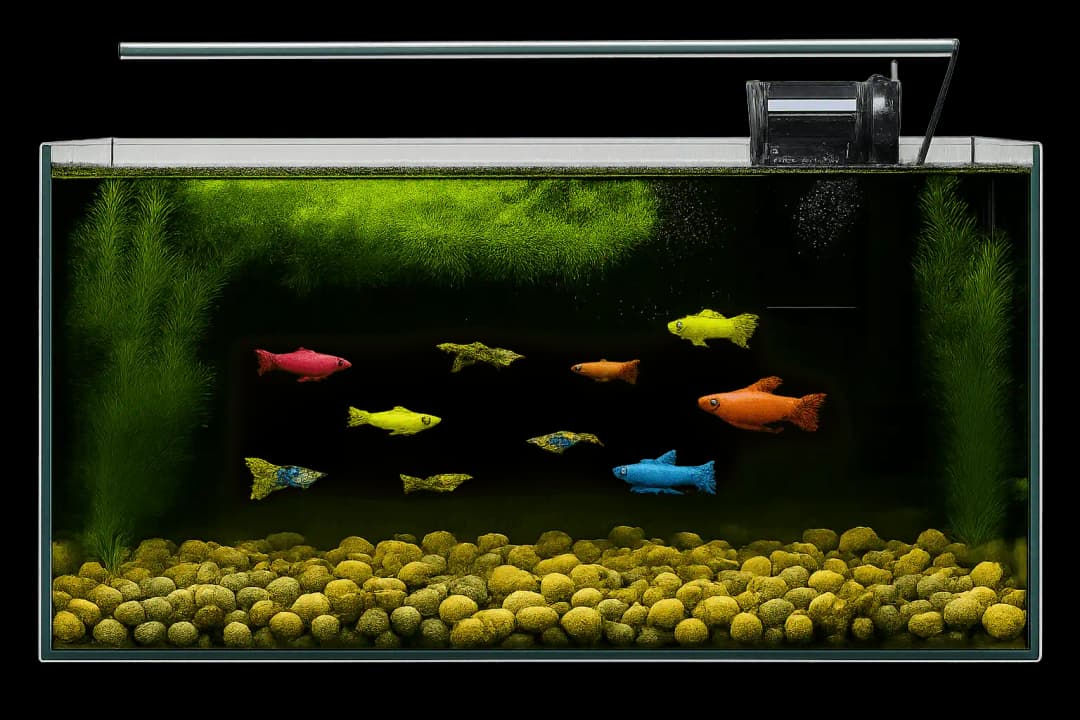Starting a new fish tank can be an exciting venture, but it's crucial to approach the process with the right knowledge to ensure the longevity of your beautiful new pets. In this comprehensive guide, we will walk you through everything you need to know to set up and maintain a healthy aquarium for your fish.
Choosing Your Fish Tank: The first step in setting up your aquarium is selecting the right tank size for your needs. A general rule of thumb is to allow 1 gallon of water per inch of fish, but this can vary depending on the species and activity level. Ensure you have enough space for filtration, decorations, and water circulation as well.
Selecting Decorations: Your fish tank's decorations play a crucial role in providing hiding spots, stimulating their natural behavior, and creating an aesthetically pleasing environment. Consider adding live plants, rocks, driftwood, or artificial decorations to your aquarium. Be mindful of the size and shape of your decorations so they do not pose a risk to smaller fish or obstruct water flow.
Adding Substrate: Choose a substrate that is easy to clean and suitable for your specific fish species. Gravel, sand, or plant-specific substrates are common choices. When adding substrate, ensure it is rinsed thoroughly before placing it in the tank to remove any excess dirt and debris.
Cycle Your Tank: Before introducing your new fish, you'll need to cycle your aquarium to establish beneficial bacteria necessary for maintaining healthy water conditions. This process can take several weeks, so it's essential to be patient during this stage. To speed up the cycling process, consider adding a fishless cycle starter or live bacterial cultures to your tank.
Adding Water: When filling your aquarium, use conditioned tap water treated with a dechlorinator or choose RO (reverse osmosis) or pre-treated water for the best results. Aim for a water temperature that closely matches the fish's natural habitat and adjust the pH level accordingly if needed.
Installing Filtration: Select an appropriate filtration system based on your tank size, species, and decorations. Internal filters, hang-on-back (HOB) filters, or canister filters are all viable options for most freshwater aquariums. Saltwater tanks may require more specialized equipment such as protein skimmers.
Setting Up Heaters: For both freshwater and saltwater aquariums, it's essential to maintain a stable water temperature. Select an aquarium heater with the appropriate wattage for your tank size and place it in a location where it will not obstruct water flow or be knocked over easily.
Introducing Fish: Once your tank is cycled, you can begin adding fish slowly to avoid overwhelming the system. Start with hardy species that are easy to care for, such as guppies, tetras, or danios. Gradually introduce other fish, taking care not to overcrowd the tank and allowing time between introductions for the newcomers to adjust to their new environment.
Maintaining Your Aquarium: Regular water changes are crucial for maintaining a healthy aquatic ecosystem. Aim for weekly partial water changes of 20-30% to remove waste, excess food, and chemicals from the water. Additionally, monitor water parameters regularly using a test kit and address any issues promptly.
Feeding Your Fish: Provide your fish with a balanced diet consisting of high-quality flake or pellet food, as well as occasional treats such as frozen or live foods. Be mindful not to overfeed your fish, as this can lead to poor water quality and health issues.
By following these guidelines, you'll be on your way to setting up a thriving fish tank that your new pets will love for years to come! Remember, patience is key when cycling your aquarium, and it may take time to find the perfect balance of water conditions and decorations for your specific fish species. Happy tanking!

